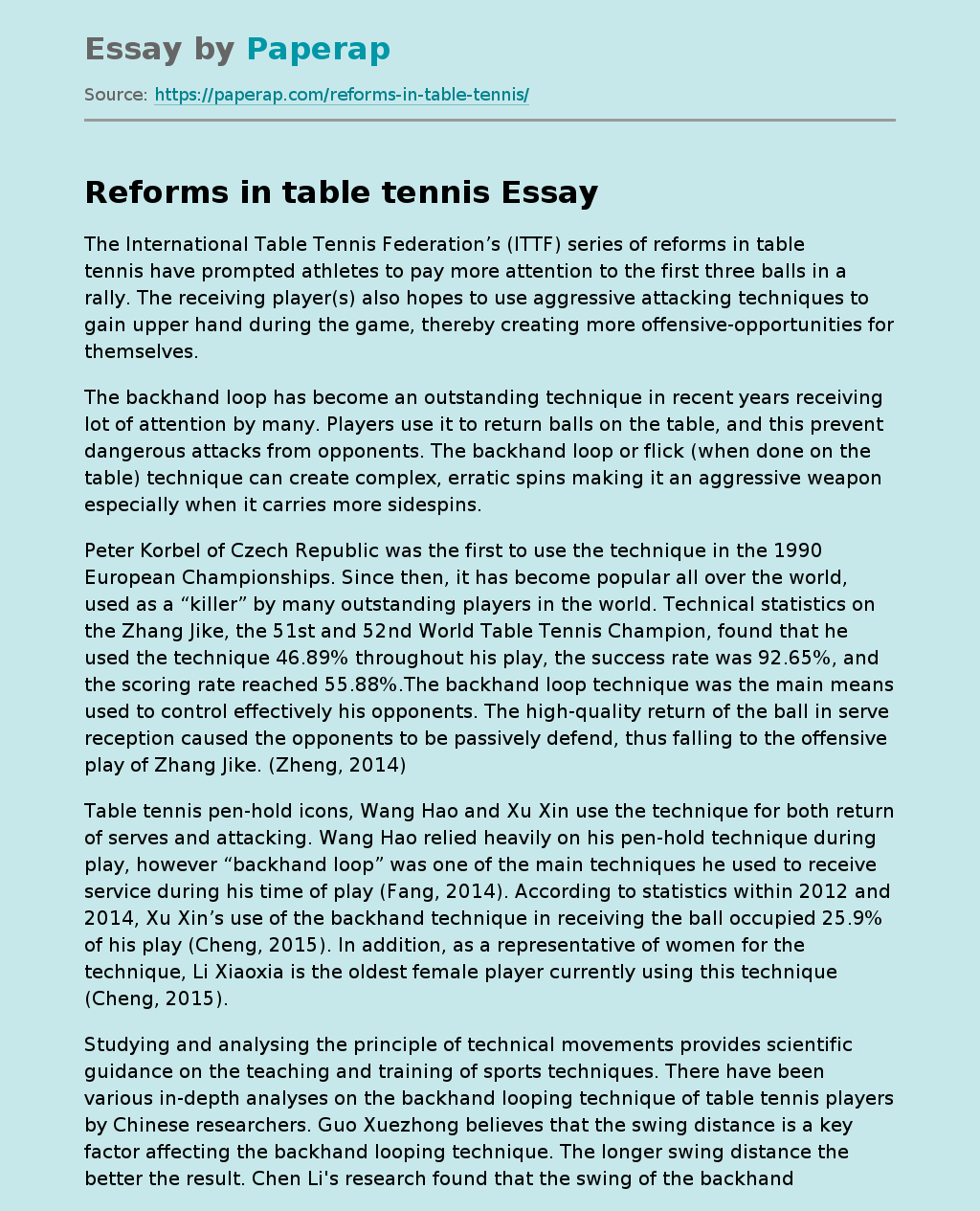The International Table Tennis Federation’s (ITTF) series of reforms in table tennis have prompted athletes to pay more attention to the first three balls in a rally. The receiving player(s) also hopes to use aggressive attacking techniques to gain upper hand during the game, thereby creating more offensive-opportunities for themselves.
The backhand loop has become an outstanding technique in recent years receiving lot of attention by many. Players use it to return balls on the table, and this prevent dangerous attacks from opponents.
The backhand loop or flick (when done on the table) technique can create complex, erratic spins making it an aggressive weapon especially when it carries more sidespins.
Peter Korbel of Czech Republic was the first to use the technique in the 1990 European Championships. Since then, it has become popular all over the world, used as a “killer” by many outstanding players in the world. Technical statistics on the Zhang Jike, the 51st and 52nd World Table Tennis Champion, found that he used the technique 46.
89% throughout his play, the success rate was 92.65%, and the scoring rate reached 55.88%.The backhand loop technique was the main means used to control effectively his opponents. The high-quality return of the ball in serve reception caused the opponents to be passively defend, thus falling to the offensive play of Zhang Jike. (Zheng, 2014)
Table tennis pen-hold icons, Wang Hao and Xu Xin use the technique for both return of serves and attacking. Wang Hao relied heavily on his pen-hold technique during play, however “backhand loop” was one of the main techniques he used to receive service during his time of play (Fang, 2014).
According to statistics within 2012 and 2014, Xu Xin’s use of the backhand technique in receiving the ball occupied 25.9% of his play (Cheng, 2015). In addition, as a representative of women for the technique, Li Xiaoxia is the oldest female player currently using this technique (Cheng, 2015).
Studying and analysing the principle of technical movements provides scientific guidance on the teaching and training of sports techniques. There have been various in-depth analyses on the backhand looping technique of table tennis players by Chinese researchers. Guo Xuezhong believes that the swing distance is a key factor affecting the backhand looping technique. The longer swing distance the better the result. Chen Li’s research found that the swing of the backhand looping technique in Taiwan has two types: ‘S’ and ‘L’. Both swing methods help to increase the friction between racket and ball. Early researchers used ARIEL/APAS software to perform the kinematic study of the backhand looping technique and revealed the kinematic characteristics of the various parts of the body during the execution of the action. They obtained the essentials of the action and pointed out that the pen-hold grip is more conducive for the technique. The tempo of the racket and the use of a raised elbow in the shakehand grip increased the rotational moment (Xiang, 2009).
This study compares the backhand looping technique by the two gripping methods, the shake-hand and the pen-hold, and discusses the contribution made by the racket and body posture in executing the technique, and to reveal the swing pattern involved in both.
Reforms in table tennis. (2021, Nov 12). Retrieved from https://paperap.com/reforms-in-table-tennis/

